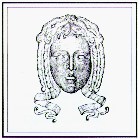Prepared for UNIVERSITY OF VIRGINIA Mesick-Cohen-Waite Architects 388 Broadway Albany, New York 12207
Partner-in-Charge
Architectural Staff
Architectural Historian
Cover Design
Publication Consultant
FOREWORD
Since its inception, the Jeffersonian Restoration Advisory Board has been deeply committed to thorough research of all historical evidence pertaining to the Academical Village. We believe that such research is the only proper foundation for restoration and preservation work, as it separates fact from myth, revealing ideas and conditions that have been altered, hidden, or simply forgotten. To the extent that such research is complete, our curatorial decisions can be informed and, we hope, justified.Our first excursion into this realm of formal research began in 1986, when we interviewed leading architectural firms that specialize in the preparation of historic structure reports. The selection of Mesick-Cohen-Waite, of Albany, New York, resulted in a comprehensive assessment of the entire site, including buildings, the landscape, and organizational issues. We have found these first efforts very helpful as opinions have been expressed and debates have occurred. Indeed, the debates have proven themselves to be among the healthiest and most entertaining aspects of the restoration effort. Our research process absolutely must continue; without it, the Jeffersonian Restoration Advisory Board and the university will not be fully discharging their responsibilities to Thomas Jefferson's historic legacy.
Following on the success of the Pavilion I historic structure report, we again retained the services of Mesick-Cohen-Waite, this time to assess Pavilion VI. Their investigation has been supplemented by Mr. Paul Schwartzbaum, a specialist in fresco restoration with the Solomon R. Guggenheim Museum, and by Messrs. D. Jeffrey Kidder, Joseph M. Lasala, and Steven E. Williams, graduate students in the School of Architecture, who were employed by the Office of Architect for the Historic Buildings to prepare measured drawings for the building. We are also pleased to call special attention to Mr. Clay S. Palazzo, assistant architect for the historic buildings until 1989, for his outstanding contributions to the work.
The Pavilion VI report provides sound insights with regard to interior and exterior modifications that have occurred throughout the past sixteen decades. Confirmation of ideas, resolution of conflicting thoughts, revelations all find their places in different parts of the study. Among the most helpful analyses are those related to the rear additions, the roof, and the frescoes. In other respects the report expands upon the report for Pavilion I, leading us toward a growing familiarity with the ensemble of buildings and a sure sense that our research methodology is basically sound. As always, however, we must remain alert to the danger of complacency, for our current positions must always welcome new evidence and our basic philosophy, which must maintain an overall consistency, will remain healthy and vital only if it can respond in a balanced manner to new perspectives about old facts.
We invite you to enjoy the historic structure report for Pavilion VI and to examine the upcoming restoration of the building, for which the report serves as a textual bridge between the past and the future. For their assistance in the funding of this report, we extend our sincere appreciation to The Andy Warhol Foundation for the Visual Arts, Inc. To all who believe in the value of the Academical Village, we urge you to share in the spirit of the report and to support continuation of the restoration effort.
JAMES MURRAY HOWARD, AIA Architect for the Historic Buildings and Grounds
 Table of Contents
Table of Contents
Last Modified: Friday, 27-Jun-1997 10:08:23 EDT
January 6, 1997